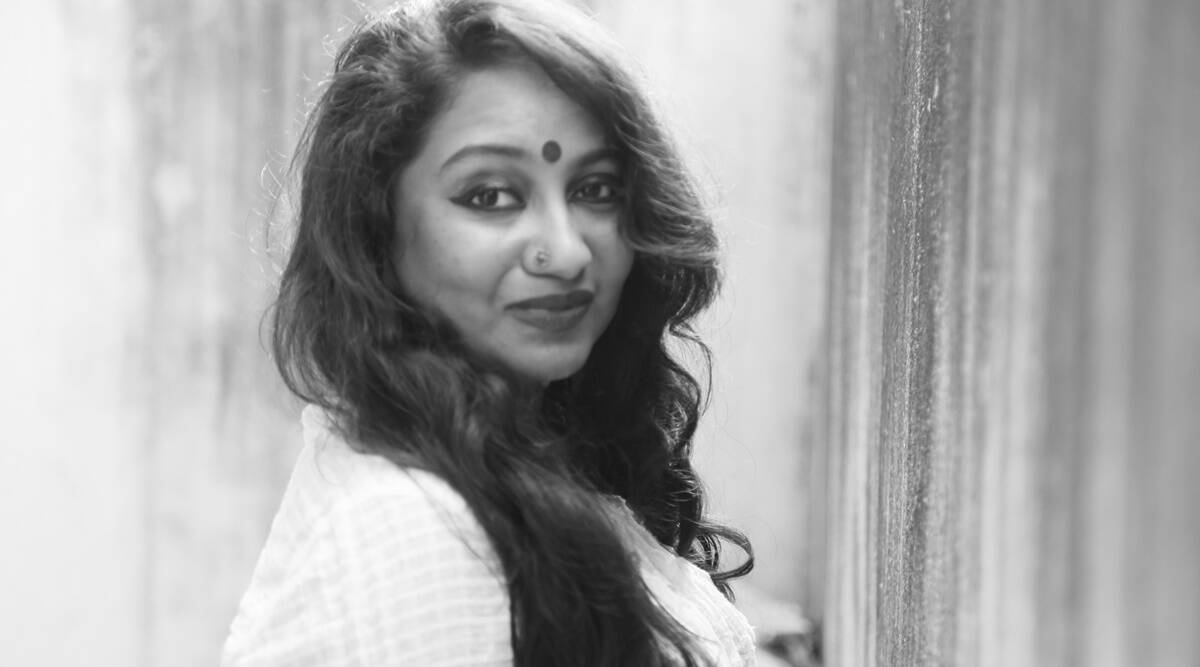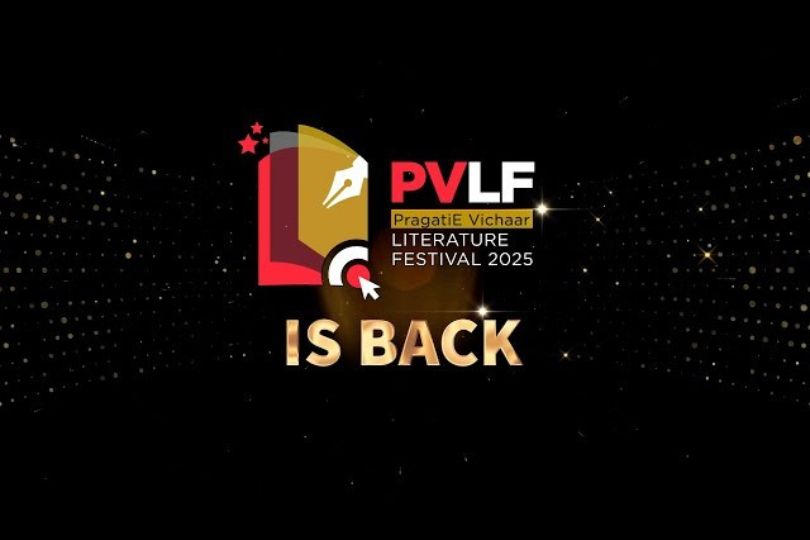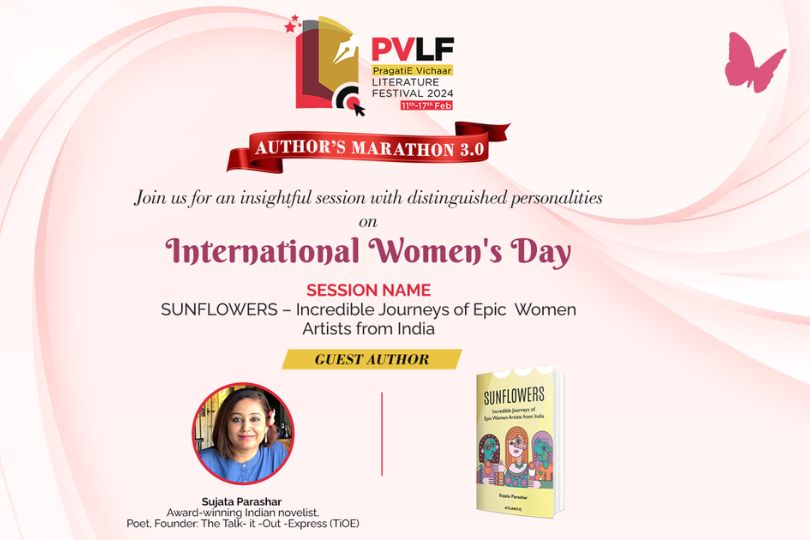Frontlist | Interview: Sharanya Manivannan, author, Mermaids in the Moonlight
Frontlist | Interview: Sharanya Manivannan, author, Mermaids in the Moonlighton Mar 03, 2021

The Chennai-based author makes her debut as an illustrator with Mermaids in the Moonlight, a picture book for children drenched in folklore, magic and the history of the civil war in Sri Lanka
Mermaids in the Moonlight came to life during the COVID-19 pandemic, a time when you had little access to the island and the ocean that feed your soul. What did the birthing of this book do to the artist in you, and how did the moon become your ally? The truth is that, for a long time, I had thought that after creating the graphic novel (Incantations Over Water, to be released later this year), I would just carve out 30-odd pages from that art and create an abridged version for children. But what transpired was completely unexpected. At the end of 2019, I was exhausted for various reasons and had decided to take a hiatus from all things creative when the storyline for Mermaids In The Moonlight appeared to me suddenly. I realised that it was its own entity, not a side project. I had written a first draft of the manuscript by the time the pandemic hit. Then, through much of last year, creating the book gave me solace, comfort, a compass, an anchor, a lighthouse, and a dozen other metaphors that may explain what it meant to me. As it happens, it is quite unlike Incantations Over Water; they share a core, but neither is the tributary of the other. The moon – the moon has always had my heart. MORE FROM THIS SECTION Lawrence Ferlinghetti (1919-2021). Essay: The importance of Lawrence Ferlinghetti The story of that Indian-origin barrister, George Edalji, has now been dug up in detail and brought to life in a new book by London-based historian-author Shrabani Basu New book uncovers Indian mystery probed by Sherlock Holmes author On this week’s reading list: a portrayal of the publishing world in India, lessons from the unusual career of a civil servant, and a critique of illiberalism and violence in Indian politics. HT Picks; New Reads A farmer ploughs his fields under the relentless sun. Review: Along with the Sun edited by Ki. Rajanarayanan Your book reminded me that mermaids are often seen as symbols of unrequited love. In TS Eliot’s poem The Love Song of J Alfred Prufrock, for instance, we read: “I have heard the mermaids singing, each to each./ I do not think that they will sing to me.” Why is love so alluring even when it seems unattainable? That reminds me of the mermaid Lighea speaking to her human lover in Giuseppe Tomasi di Lampedusa’s The Professor and the Siren (translation: Stephen Twilley): “Don’t believe the stories about us. We don’t kill anyone, we only love.” Mermaid lore has had multiple meanings across the world: from conflation with the birdlike sirens, to the romanticisation and sanitisation of Hans Christian Anderson’s tragic The Little Mermaid, and more – as human beings, we have made whatever we want to of these liminal beings. I think love is all the more alluring when it is unattainable, is it not? I have moved through so many emotions on my journey with Ila and the mermaids: from disappointment, to equanimity, to having grown to appreciate the idea that there are some things we cannot know, and that holding this unknowledge is also a kind of love. Let’s talk about the mermaid as a creature and a metaphor. While reading the book, I thought of how affirming it would be for queer and trans readers, and for people with disabilities, whose bodies are either erased or made hyper visible for being non-normative. What curious mix of intention and serendipity made this possible? It was intentional. As this is a visual book, I had exciting new ways to bring these affirmations in. For instance: the person in the wheelchair was an image that came to me quite early on and that I really believed in. There are a couple of triton-bodied characters who are just there without a fuss over what to call them, and then there’s the queer love implied on the page where a South American mermaid uses a charango to serenade one from Kumari Kandam. Incantations Over Water, the graphic novel that follows Moonlight and which is narrated by Ila of the lagoon, is more queer still. Moonlight’s mermaids come in different colours and shapes as well. For example, the fact that European sailors who saw manatees or seals on their expeditions and thought them to be mermaids were obviously fantasising about bodies that are nothing like the Disney-Barbie standard is made clear. The breadth of stories in this book also challenge the assumed Eurocentricity of the mermaid figure. Mermaid stories have always existed across human cultures. The book opens with a beautiful dedication: “These stories from the waters of the world are offered with respect and honour for the peoples, cultures, languages and places that they originate from.” Why was this gesture important for you? This book came out of a folkloric void: the question of why mermaid figures are everywhere in Batticaloa’s public facades, but myths or stories about the meen magal are not prevalent. One way of acknowledging, rather than filling, that void for me was to reach for more mermaid stories around the world. It was through them that Moonlight really came into being. It was important for me to give thanks to all the storytellers before me, and to acknowledge that their stories are rooted in their experiences and histories, just as all of mine are. I was acutely afraid of cultural misappropriation, so I tried to weave uncertainty and humility into the narrative. When your work is called ‘feminist’, does that signal a sense of belonging with a community of writers whose work you admire? Does it set up expectations that you do not care to fulfil? Mermaids In The Moonlight is intended to be a feminist picture book. I’ve layered it heavily with those themes: it’s a story about a single mother who adopts a daughter, a story about the erstwhile matrilineal and matrilocal culture that even my recent ancestors practised, and many stories about mermaids who long for or love their freedom. I was also careful to weave in the 1983-2009 civil war and the 2004 tsunami, both of which had (and still have) a tremendous impact on the region and its people. So the expectations – I set them up myself. I have tried my best to fulfil them. What would you say to people who read Ila, the mermaid of Mattakalappu, as your alter-ego? Is it exhausting to find readers scavenging for pieces of your autobiography when you want them to be swept away by a world you have created? I understood eventually that, as in dream theory, I am both the protagonists in Moonlight. I am Nilavoli, the much-loved child whose mother gives her the world in lieu of all other inheritances she cannot have, and I am the mother too. So perhaps I am Ila too. I reveal myself in all my writing, a way of being that comes with its wonders and its snares. There will always be judgmental people, but equally disturbing are those who do not realise that their relationship is only with the work, not with me as a person. I bare my heart, but I maintain this boundary. The book includes a note stating that “Ilankai and Mattakalappu are the Tamil names of places you may know as Sri Lanka and Batticaloa.” How did your politics shape your aesthetic choices in this book? I really wanted to use the Tamil names of the places, because language erasure is one of the many aspects of our experiences both on the island and in the diaspora. At the same time, I did not see the point of completely obscuring the English names to the extent that accessibility became compromised (this is a bit like conversations I had with myself and my associates over whether to romanize a Tamil word as Margazhi or Margali in The Queen of Jasmine Country). Instead, I enjoyed small concessions, like the untranslated tattoo of Nilavoli’s name in Tamil. I was aware that sensitivities and fault lines will inevitably exist in any work about Tamils from the island, and I tried to hold room for places where my politics may differ from another’s. Take the chiaroscuro triptych on the war, for example: it moves from the relative ambiguity of destruction of property (a tank and a building), to the tricky note of child soldiers, to the unequivocal homage to the Mothers of the Disappeared movement. The imagery there details more than the text: Amma only tells Nilavoli that this place contains tremendous pain. When I was doing sessions with beta readers, I spoke to a Tamil parent in Colombo. They asked me why I had written about the war at all; their children had been born after it and it wasn’t a topic they discussed. And I think that’s valid, you know: we can presume what we like about privilege and positionality, but we aren’t really engaged in meaningful work if we don’t account for how different lived experience is from analysis, theory or expectation. I have tried to hold all this gently, without appeasement, without provocation. The mermaid also appears in your book The High Priestess Never Marries (2016). The narrator says, “You could not listen to the song when the military had control of the bridge. For 30 years, she must have sung only for herself. So that when finally we ventured back into the water, it was us and not her who had perhaps been forgotten.” What do these lines evoke in you today? Only I know the extent of the blessing in my life, to have swum through curse and circumstance, to have been able to bring to the surface what the lagoon, what the land, gave to me. The story “Conchology” that you reference began something; Moonlight and then Incantations contain more. There is more yet. Nilavoli and Amma took me back to your poem Echo in the book The Altar of The Only World (2017). You write about “the way fools listen to humming shells/ not recognizing the song of their own/ blood-tide, not trusting their bodies/ capable of encapsulating the sea.” How do you view your own journey as a writer since then? I’m grateful you’ve been able to draw this thread between my works, and I thank you for your thoughtful reading and questions. I always think of Altar in terms of the year I began writing it, in 2009, so the journey has indeed been long. I can say now, at the cusp of Mermaids In The Moonlight’s release, that it is only with this six book that I am finally in the landscape I always longed to write about. After the picture book and its companion graphic novel will come a long novel also set in Batticaloa, entitled Constellation of Scars. As for the sea, and the moon, and the petals and the leaves – I have always belonged to them, ultimately. Your next book Incantations Over Water is a graphic novel for adults. Could you talk a little about the experience of working with images, and how that may have changed your relationship with words? Although I had been drawing and painting for a long time, I made the switch to digital art only with Moonlight, and picked up skills as I went along. It was quite amazing to observe how the artist in me had more say than the author. At the book design stage, I whittled lines away with ease so as to prevent them from overtaking the imagery. I wrote most of Incantations only after this process, and I did so with a different formatting sensibility than I had had before. As someone who has worked across forms – poetry, short fiction, long fiction, columns, essays, reportage, children’s literature – bringing visual art into my repertoire was joyous, challenging and instinctive at once. The two books are also visually different: Moonlight is full of vibrant colours, and Incantations will have a more restricted palette, one that evokes cyanotypes, indigo fabric and the sea. Read More: Education Minister Ramesh Pokhriyal ‘Nishank’ releases study material of Indian Knowledge Tradition courses of NIOS Source: Hindustan Times
Author
Authors
Bestseller
Book
book news
Chennai-based author
Coronavirus
Covid-19
Frontlist India news
Indian authors
Latest news
Mermaids Moonlight



.jpg)






.jpg)
.png)
.jpg)
.jpg)
.jpg)
.jpg)
.jpg)
.jpg)










Sorry! No comment found for this post.